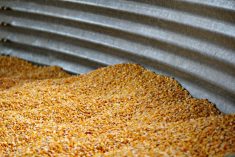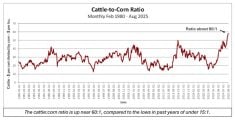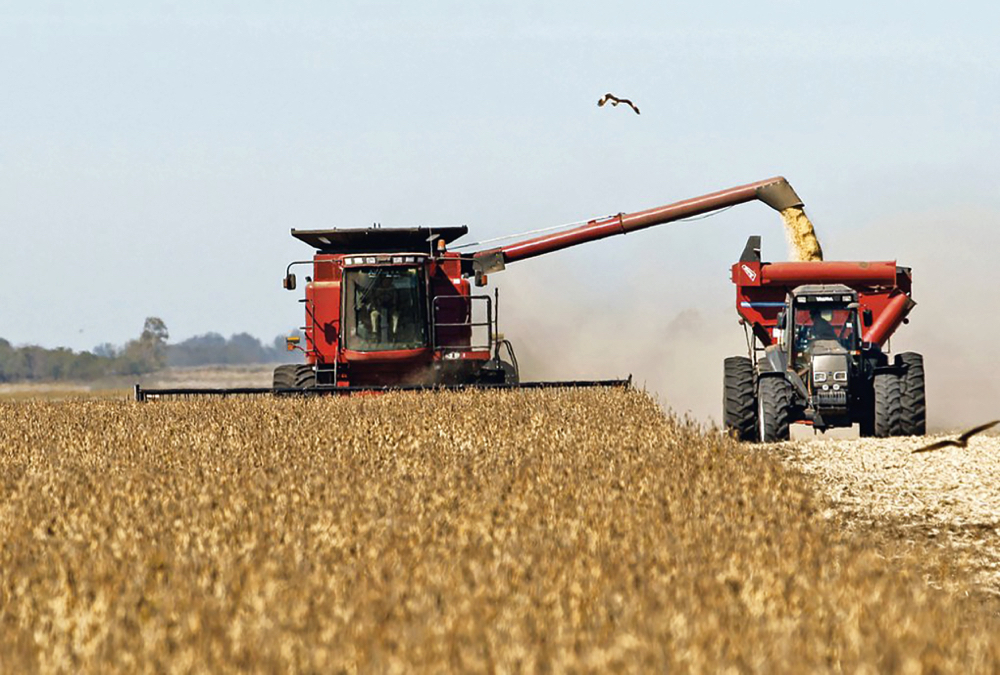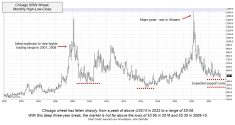Yield reports are coming in above Statistics Canada’s August model-based survey, and we’ve therefore increased our Ontario production estimates.
Quick look:
Soybeans: U.S. sales have saturated non-Chinese markets making it difficult for Ontario soybeans to compete.
Corn: Early yield reports confirm the USDA’s crop estimate of 427 million tonnes.
Wheat: The seasonal rally that occurs in the fall has been muted due to larger than expected production from all major exporters.
Read Also
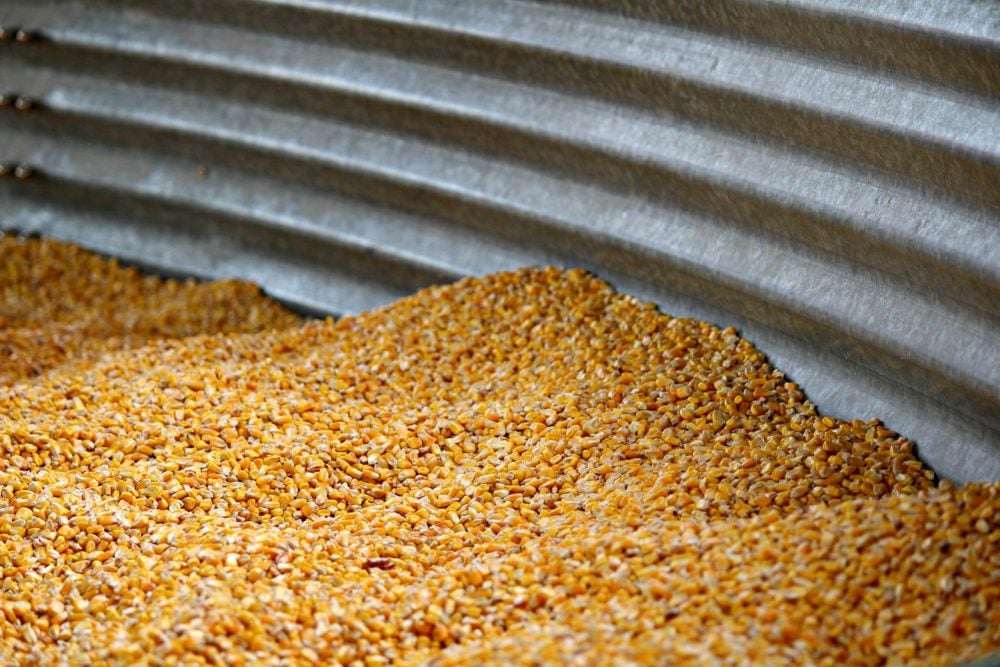
Cycle swings dictate farming profitability
It can be profitable to understand where the crop markets are positioned in the context of their big-picture cycles.
U.S. and Ontario farmers have been active sellers of corn and soybeans causing the futures market to grind lower. The Ontario commercial pipeline is filling up resulting basis depreciation for both corn and soybeans. All major wheat exporters, including the U.S., have boosted their crop production estimates over the past month by a combined 12 million tonnes. This additional volume has limited strength in wheat.
Soybeans
Ontario yield reports are better than expected. We’re now projecting a crop size of 4.3 million tonnes, up from StatCan’s model-based survey of 3.972 million tonnes and similar to last year’s output of 4.353 million tonnes.
Ontario farmers will sell three million tonnes from Sept. 1 through Dec. 31. The domestic crush from Sept. 1 through Dec. 31 is estimated at 500,000 tonnes while exports are expected to reach 1.6 million tonnes. Total demand is estimated at 2.1 million tonnes.
Ontario soybean basis levels will start to strengthen in November as the export pace increases. The Ontario and U.S. soybean harvests will be 90 per cent complete by the end of October given the current weather forecast.
Ontario crushers have the bulk of their requirements covered through November. Elevator bids in Ontario will be determined by the export market.
During the first week of October, U.S. soybeans were offered at US$398/tonne f.o.b. the Gulf while Brazilian soybeans were quoted at US$436/tonne f.o.b. Paranagua. It appears that China has the bulk of their requirements covered through December from Argentina and Brazil.
The window for U.S. soybeans to trade to China is rapidly closing. U.S. sales have saturated non-Chinese markets making it difficult for Ontario soybeans to compete. Ontario soybeans were quoted at US$395/tonne f.o.b. St. Lawrence port for November loading.
There is ongoing uncertainty with the U.S. biofuels blending mandate. Comments from the Trump administration have contributed to overall U.S. biofuel policy. The value of soybean oil has been the main driver of the crush margin structure. We’re looking for weaker soybean oil values over the next four to six months which will limit the upside for soybeans.
As of Oct. 5, Brazilian soybeans were 10 per cent planted. Argentinean farmers will start planting in late October or early November. The trade is factoring in a year-over-year increase in Brazilian and Argentinean soybean production.
What to do: We’ve advised farmers to be 40 per cent sold on their 2025 production. At the time of writing this article, there was no progress on trade talks between China and the U.S. If the Chinese tariffs remain in place on U.S. soybeans, we will see U.S. soybeans trade to Ontario crushers in the latter half of the 2025/26 crop year. This will limit the upside in the Ontario domestic market. On the flip side, if China lifts the tariffs on U.S. soybeans, the North American soybean market will rally $1/bu. very quickly. We have to balance the risks as we go forward.
Corn
We’re estimating the Ontario corn crop at 10.2 million tonnes, up from StatCan’s survey of 9.905 million tonnes and 2024 production of 9.627 million tonnes. Ontario farmers are expected to sell 5.6 million tonnes of corn in the first four months of the crop year. Domestic demand from Sept. 1 through Dec. 31 is estimated at three million tonnes while exports are forecasted to reach 400,000 tonnes. Total demand is 3.4 million tonnes. The corn market will function to encourage demand. Cattle on feed inventories are at seasonal lows during August and September. Domestic feed demand increases in October and November before making a seasonal high in December and January.
We’re expecting the U.S. corn harvest to be 80 per cent complete by the end of October. Early yield reports confirm the USDA’s crop estimate of 427 million tonnes, up from 378 million tonnes last year. U.S. farmers sell about 50 per cent of the crop from Sept. 1 through Dec. 1. U.S. domestic feed demand mirrors the Ontario pattern.
During the first week of October, U.S. corn was offered at US$200/tonne f.o.b. the Gulf, while Brazilian corn was quoted at US$210/tonne f.o.b. Paranagua. French corn was valued at US$225/tonne f.o.b. La Pallice. U.S. corn export sales are running 75 per cent ahead of last year as the market functions to encourage offshore movement.
In past years, Ontario corn competed with French corn and European feed wheat for market share in Northern Europe. This year, U.S. offers have been very aggressive stemming demand for Ontario origin. Our export forecast of 400,000 tonnes for the first four months of the crop year may be optimistic.
Secondly, there is potential for U.S. corn from just south of the border to trade into Ontario over the winter period and well into spring. In any given crop year, Ontario imports 125,000-200,000 tonnes of U.S. corn. For 2025/26, Ontario imports of U.S. corn could reach 500,000 tonnes.
What to do: We’ve advised Ontario farmers to sell 40 per cent of their 2025 corn production. Plan to store the remainder of the crop into spring of 2026. This is when demand for Ontario corn is at seasonal highs. The U.S. corn market needs to discourage U.S. acres next spring. The corn market usually incorporates a risk premium in March or April when Brazil’s second crop is developing. This will contribute to strength in the corn market in the latter part of the crop year.
Wheat
The Ontario wheat market continues to trade near seasonal lows. Earlier in August, we believed the market had factored in the large crops from all major exporters in the Northern Hemisphere. However, revised winter wheat estimates over the last month along with the yield results from the spring wheat have boosted supplies from all major exporters (including the U.S.) by approximately 12 million tonnes. This additional supply has to be pushed into the world market which has resulted in intense competition and kept prices at lower levels.
The Ontario winter wheat crop will likely finish near 3.2 million tonnes, up from the StatCan’s model-based survey of three million tonnes and up from the 2024 crop of 2.4 million tonnes. We’re estimating Canadian spring wheat output at 27.6 million tonnes, up from the year-ago figure of 26.6 million.
The USDA’s Small Grain Production Survey, released Sept. 30, had hard red winter wheat production at 21.9 million tonnes, up from last year’s output of 21 million tonnes. This was a surprise to the trade as earlier estimates were below last year. U.S. soft red winter came in at 9.7 million tonnes, up from the 2024 harvest of 9.4 million tonnes.
In Russia, traders have the wheat crop in the range of 87-88 million tonnes, up from the 2024 production of 81.5 million tonnes. European wheat output production is estimated at 140 million tonnes, up 18 million tonnes from last year.
Southern Hemisphere conditions are favourable. The Australian crop is projected to finish at 34.5 million tonnes, unchanged from last year. Argentina’s crop is forecasted to reach 19.5 million tonnes, up one million tonnes from last year.
There is no shortage of wheat in the world. The seasonal rally that occurs in the fall has been muted due to the larger than expected production from all major exporters. The next major major rally occurs in the spring before the Northern Hemisphere winter wheat crop comes out of dormancy.
What to do: In our previous issue, we advised farmers to sell 20 per cent of the 2025 milling wheat. This week, we’re advising farmers to sell an additional 20 per cent of milling wheat bringing total sales to 40 per cent. We’re also recommending that farmers sell 10 per cent of their feed wheat bringing total sales to 40 per cent. December and January are dead months for the wheat market so you must sell before then.






